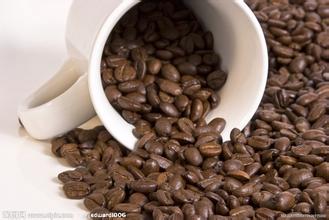Indonesian Coffee Bean Price Bali Kopi Luwak Indonesian Coffee brief introduction
Country profile
Indonesia, the "country of the Thousand Islands", has the largest number of islands in the world.
When it comes to Indonesia, the most familiar is probably the resort island of Bali.
A brief History of Coffee
In 1696, the then Governor of the Netherlands in Malabar, India, gave a batch of coffee seedlings to the Governor of the Netherlands in batavia in Batavia (present-day Jarkata in Jakarta). This was the first time that coffee was grown in Indonesia. However, the first batch of coffee seedlings were washed away by the flood. In 1699, Batavia accepted the gift again. This time, the coffee seedlings survived successfully and ushered in the first harvest in 1701, which began the coffee trip to Indonesia.
At first, coffee was grown in and around Jakarta, and then gradually expanded to central and eastern Java, as well as Sulawesi, Sumatra and Bali. At the same time, in eastern Indonesia, coffee was also grown in Flores on the island of Flores and Timor on the island of Timor in the Portuguese territory at that time, but the source of the coffee seedlings was different.
Indonesian coffee began to supply the European market in 1711, when Indonesia was the first country outside Africa and Arabia to grow coffee on a large scale. It became the world's largest exporter of coffee in the 1880s. The fame of Java coffee began here.
The prosperity of coffee in Indonesia was not sustainable, coffee production was fatally hit at the end of the 18th century, and leaf rust, originally found in West Java, spread rapidly, destroying the Arabica coffee estate in Indonesia. The leading position of the coffee trade was replaced by the American producing countries. However, it is worth mentioning that the leaf rust disaster did not affect the eastern Indonesian producing areas, namely Flores Island and Timor, where the genes of some coffee trees in Timor today can be traced back to the 16th and 17th centuries.
Indonesia ranked third in coffee production in the world in 2013, although 80 per cent of it was Robusta, according to ICO.
Table: 2008-2013 Indonesian coffee output (unit: 000 bags, 60kg/ bags)
Year
2008
2009
2010
2011
2012
2013
Output
9612
11380
9129
7288
13042
11667
Ranking
three
three
three
four
three
three
Source: ICO official website
Brief introduction of Indonesian Coffee Indonesian Coffee (1)
Main coffee producing area
Java, the oldest producing area, continues its reputation from the glory days of Indonesian coffee in the 18th century. Java coffee is still reminiscent of high-quality delicacy, when the most famous blend is Java coffee with Yemeni mocha. In addition, Java also has a very famous old coffee Aged coffee, or monsoon coffee Monsooned coffee.
Sumatra, the most legendary producing area, well-known coffee logos include Mandheling Mantenin, Lintong Lintong and Gayo Mountain Gayusan.
Sulawesi Island, famous coffee includes Delaga Toraja.
In addition, Bali, Flores and Timor are also important producing areas.
Coffee planting mode
In the Dutch colonial era, coffee was mainly grown in large estates. After World War II, it experienced the process of nationalization and the movement of independence. Today, about 90% of the coffee produced in Indonesia is produced by small farmers.
Coffee variety
At first, Indonesian coffee was Arabica, and the Arabica manor was destroyed by a leaf rust disaster at the end of the 18th century. at first, the Dutch tried to grow Liberian seeds, and later, they began to plant Robsta seeds on a large scale.
At present, Arabica species account for about 10-15% of the coffee produced in Indonesia, and the rest is Robusta. Although Liberika species are produced, they are basically not included in the coffee trade.
Coffee harvest
There are usually two harvest seasons in Indonesia, the main harvest season (main crop) occurs from September to October, and the second harvest season (fly crop) occurs from May to June.
Arabica will be picked by hand, and workers who pick by hand will enjoy a minimum wage, on the basis of which there will be performance pay.
Brief introduction of Indonesian Coffee Indonesian Coffee (1)
Coffee treatment
Coffee from Java is traditionally washed.
Sumatra and Sulawesi are famous for their "wet planing" wet-hulled with Indonesian characteristics, known locally as Giling Basah.
The drying methods in coffee processing vary according to the situation: high-priced bed drying in the awning, balcony drying, roadside drying and other methods are all used.
Coffee flavor
Although the flavor varies from region to region, Indonesian coffee is usually mentioned, and the excellent full body is most often mentioned.

Important Notice :
前街咖啡 FrontStreet Coffee has moved to new addredd:
FrontStreet Coffee Address: 315,Donghua East Road,GuangZhou
Tel:020 38364473
- Prev

Coffee bean boutique manor Indonesia Bali coffee bean manor Indonesian coffee beans
BaLi Island is a famous tourist area in Indonesia, more than 1000 kilometers away from the Indonesian capital Jakarta, across the sea from Java Island where Jakarta is located. Bali covers an area of more than 5560 square kilometers and has a population of about 3.15 million. Bali is in the tropics with a hot and humid climate. Bali is mostly mountainous, with vertical and horizontal mountains, high in the east and low in the west. There are still four or five on the island.
- Next

Papua New Guinea Coffee beans introduce the coffee flavor of Papua New Guinea
Papua New Guinea Coffee Babu Papua New Guinea, also known as Papua New Guinea Barbuda. Papua New Guinea coffee is the second largest agricultural export project in Papua New Guinea, accounting for 18 percent of the total agricultural exports in 2003. The country's coffee industry developed to a certain extent in the 1990s, with exports reaching 500 million kina in 1998.
Related
- Does Rose Summer choose Blue, Green or Red? Detailed explanation of Rose Summer Coffee plots and Classification in Panamanian Jade Manor
- What is the difference between the origin, producing area, processing plant, cooperative and manor of coffee beans?
- How fine does the espresso powder fit? how to grind the espresso?
- Sca coffee roasting degree color card coffee roasting degree 8 roasting color values what do you mean?
- The practice of lattes: how to make lattes at home
- Introduction to Indonesian Fine Coffee beans-- Java Coffee producing area of Indonesian Arabica Coffee
- How much will the flavor of light and medium roasted rose summer be expressed? What baking level is rose summer suitable for?
- Introduction to the characteristics of washing, sun-drying or wet-planing coffee commonly used in Mantenin, Indonesia
- Price characteristics of Arabica Coffee Bean Starbucks introduction to Manning Coffee Bean Taste producing area Variety Manor
- What is the authentic Yega flavor? What are the flavor characteristics of the really excellent Yejasuffi coffee beans?

